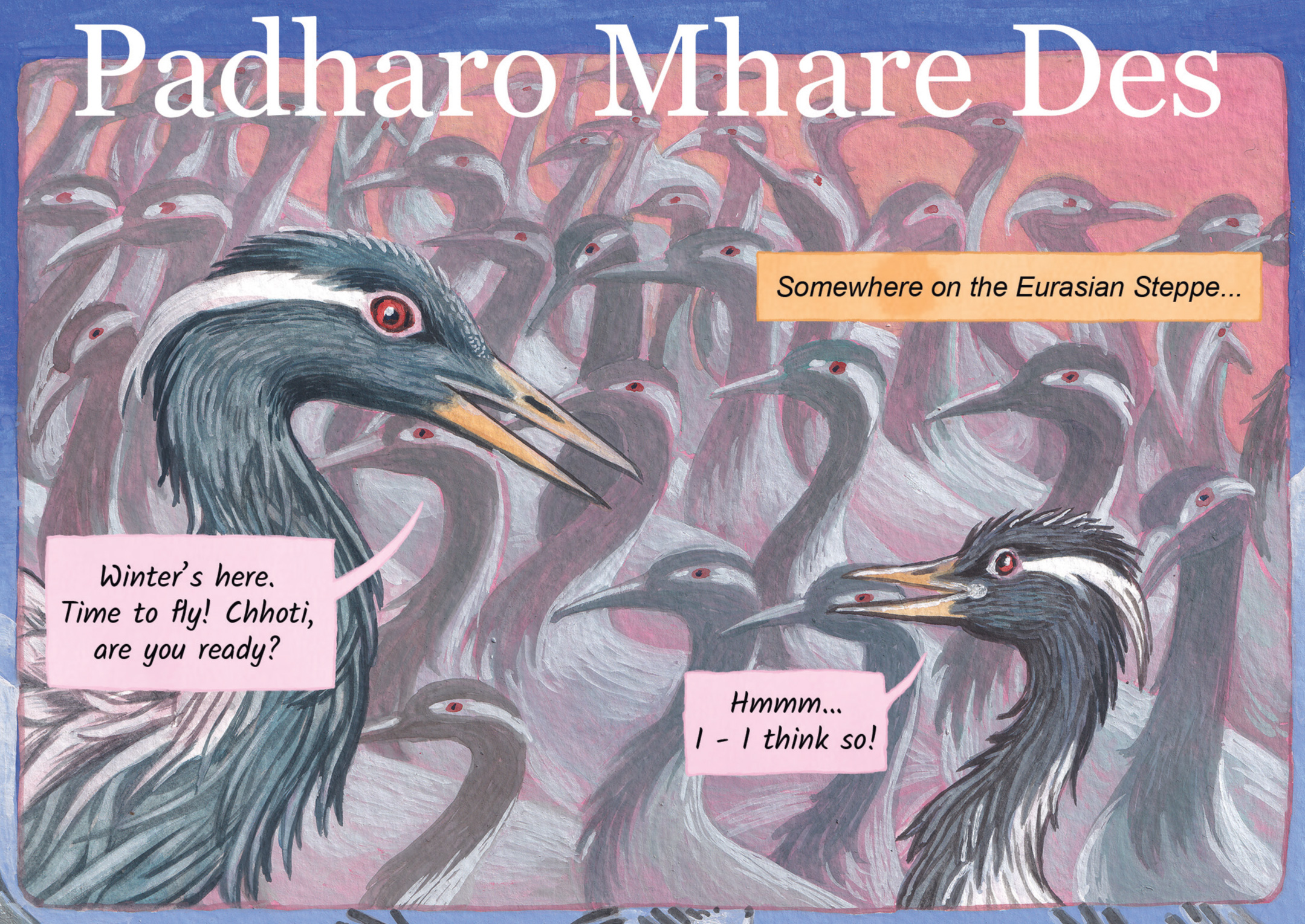
Vol 2 Issue 1 | April-June 2022
Padharo Mhare Des
Story by Mohd Salman | Art by Lokesh Khodke
Every year, the village of Khichan near Jodhpur in Rajasthan hosts flocks of ‘kurjaa’, grey-and-black demoiselle cranes (named thus by Marie Antoinette) flying in from the vastness of Eurasia, seeking solace in the temperate Indian winter. A few kind locals in the 1970s offered grain and water to the famished cranes at the end of their 5,000-kilometre journey, and word went round of their generosity. For five months each year, thousands of cranes make Khichan their home, casting aside the hardships of their long migration.
meaning “welcome to my land” is a popular traditional greeting from Rajasthan. This land of legendary warriors, rulers and tradesmen has long been known for the hospitality of its citizens. This hospitality is not just limited to people. Across the state, religious and cultural beliefs encourage extraordinary compassion towards animals and birds too.
Rosy Starlings
It’s not just human tourists who flock to India in the winter months. Vast pink clouds of Rosy starlings travel through the country at this time, their gigantic murmurations scattering into smaller flocks as they shelter in large trees across cities, towns and villages. It is remarkable that birds so small are able to brave every kind of weather, every hardship to travel across continents each year.
Amur Falcon Migration through North-eastern India
A taste for dragonflies causes the diminutive Amur falcons to migrate from their breeding grounds in south-eastern Russia and northern China, crossing India and the Arabian Sea until they reach their destination in southern Africa. They traverse a distance of over 22,000 kilometres, which includes the longest sea crossing of any bird of prey.
Up to the early 2010s, thousands of these falcons were hunted during the Indian leg of their journey. Since then, the local communities have understood the ecological significance of this species better and have become active supporters of their conservation.
In the African savannah, the coming and going of the rains dictates the migration of its land mammals. Among the most dramatic involves the herds of zebras and wildebeest, numbering over a million animals, migrating from the Ngorongoro crater in Tanzania to Kenya’s Masai Mara.
The annual spectacle dwarfs the imagination, as the grasslands thunder with the movement of millions of hooves. A group of animals the size of a city, on a pilgrimage that does not recognize man-made borders.

